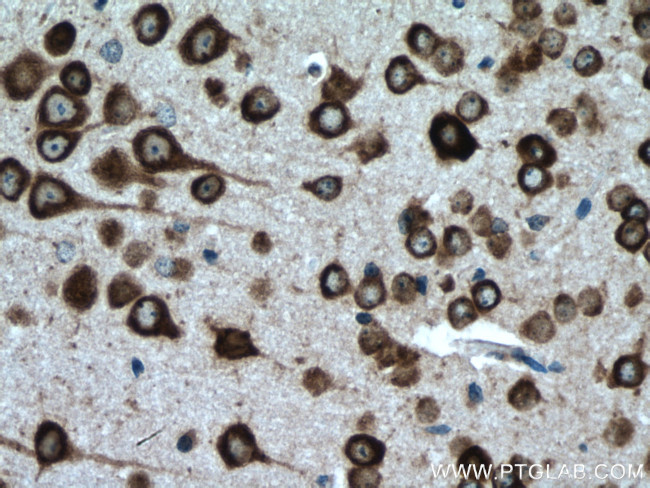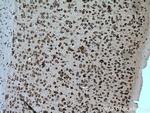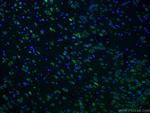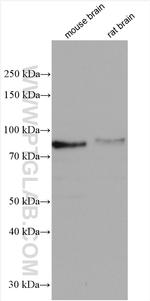Search Thermo Fisher Scientific
产品信息
12669-1-AP
种属反应
已发表种属
宿主/亚型
分类
类型
抗原
偶联物
形式
浓度
纯化类型
保存液
内含物
保存条件
运输条件
产品详细信息
Aliquoting is unnecessary for -20°C storage.
靶标信息
Sequence-specific RNA-binding protein which acts as a translational repressor in the basal unstimulated state but, following neuronal stimulation, acts as a translational activator. In contrast to CPEB1, does not bind to the cytoplasmic polyadenylation element (CPE), a uridine-rich sequence element within the mRNA 3'-UTR, but binds to a U-rich loop within a stem-loop structure. Required for the consolidation and maintenance of hippocampal-based long term memory. In the basal state, binds to the mRNA 3'-UTR of the glutamate receptors GRIA2/GLUR2 mRNA and negatively regulates their translation. Also represses the translation of DLG4, GRIN1, GRIN2A and GRIN2B. When activated, acts as a translational activator of GRIA1 and GRIA2. In the basal state, suppresses SUMO2 translation but activates it following neuronal stimulation. Binds to the 3'-UTR of TRPV1 mRNA and represses TRPV1 translation which is required to maintain normal thermoception. Binds actin mRNA, leading to actin translational repression in the basal state and to translational activation following neuronal stimulation. Negatively regulates target mRNA levels by binding to TOB1 which recruits CNOT7/CAF1 to a ternary complex and this leads to target mRNA deadenylation and decay (PubMed:21336257). In addition to its role in translation, binds to and inhibits the transcriptional activation activity of STAT5B without affecting its dimerization or DNA-binding activity. This, in turn, represses transcription of the STAT5B target gene EGFR which has been shown to play a role in enhancing learning and memory performance (PubMed:20639532). In contrast to CPEB1, CPEB2 and CPEB4, not required for cell cycle progression (PubMed:26398195). [UniProt]
仅用于科研。不用于诊断过程。未经明确授权不得转售。
生物信息学
蛋白别名: CPE-binding protein 3; CPE-BP3; cytoplasmic polyadenylation element binding protein 3; Cytoplasmic polyadenylation element-binding protein 3; hCPEB-3
基因别名: 4831444O18Rik; CPE-BP3; CPEB3; KIAA0940; mKIAA0940; RGD1564670
UniProt ID: (Human) Q8NE35, (Mouse) Q7TN99
Entrez Gene ID: (Human) 22849, (Rat) 309510, (Mouse) 208922







